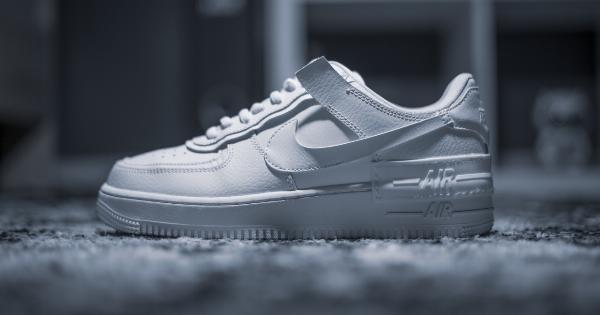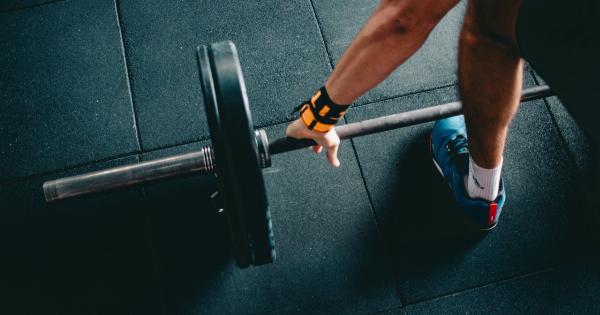Choosing the right running shoes is crucial for any avid runner. The perfect pair can enhance your performance, prevent injuries, and provide ultimate comfort.
With so many options available in the market, finding the best running shoes for you can be overwhelming. This ultimate guide will help you navigate through the process and find the perfect fit for your needs.
Determine Your Foot Type
Before diving into the different types of running shoes, it’s important to understand your foot type. There are three common foot types:.
- Neutral Pronation: The weight is evenly distributed across the foot.
- Overpronation: The foot rolls inward excessively while running.
- Supination (Underpronation): The foot doesn’t roll inward enough, resulting in high arches.
Knowing your foot type will help you choose the right features and support in a running shoe.
Determining the Right Shoe Category
Running shoe categories are based on the level of cushioning and support they provide. The main categories include:.
- Neutral Cushioned Shoes: Ideal for runners with neutral pronation and a high arch.
- Stability Shoes: Designed for runners with mild to moderate overpronation.
- Motion Control Shoes: Recommended for runners with severe overpronation.
Determining the appropriate shoe category will narrow down your options and provide better guidance.
Consider Your Running Terrain
The running surface plays a vital role in selecting the right running shoes. Consider the following factors when choosing based on terrain:.
- Road Running Shoes: Designed for pavement and typically offer good cushioning.
- Trail Running Shoes: Built for off-road trails, providing a more rugged outsole and added protection.
- Track Running Shoes: Lightweight shoes designed for speed on the track.
- Cross-Training Shoes: Versatile shoes suitable for both running and other activities.
Matching the shoes to your running terrain will optimize your comfort and performance.
Understanding Shoe Anatomy
Knowing the components of a running shoe will help you make an informed decision:.
- Upper: The top part of the shoe that wraps around the foot.
- Midsole: Located between the upper and the outsole, provides cushioning and stability.
- Outsole: The bottom part of the shoe that comes in contact with the ground.
- Heel Counter: A firm material that reinforces the heel area for stability.
- Toe Box: The spacious area around the toes.
Understanding these components will help you analyze the construction and performance of different running shoes.
Get Professionally Fitted
It’s recommended to visit a specialty running store for a professional fitting. They will assess your foot type, analyze your gait, and recommend suitable options.
This personalized fitting experience can be instrumental in finding the best running shoes for your specific needs.
Try Before You Buy
Once you have narrowed down your options, try on multiple pairs and go for a test run if possible. Here’s what to keep in mind during this process:.
- Sizing: Sizes may vary across brands, so don’t rely solely on your usual shoe size.
- Fit: Look for a snug fit without any discomfort or pressure points.
- Wiggle Room: Leave some room at the end of your toes to accommodate foot swelling during runs.
- Socks: Wear the socks you usually run in to get an accurate fit.
Testing out the shoes before purchasing will give you a real feel for how they perform and whether they are the right fit for you.
Consider Your Running Goals
Your running goals and training routine can influence your choice of running shoes:.
- Distance Running: If you are training for long-distance races, look for shoes with extra cushioning for enhanced comfort.
- Speed Workouts: Opt for lightweight shoes that offer a responsive feel for quick and efficient movements.
- Trail Running: Choose shoes with added traction and support to navigate uneven terrains.
Aligning your shoes with your running goals can greatly impact your performance.
Consider the Shoe’s Durability
Depending on your running frequency and intensity, durability may be a crucial factor:.
- Midsole Cushioning: Look for durable foam or cushioning materials that can withstand high mileage.
- Outsole Rubber: Check for durable and wear-resistant rubber that can endure different terrains.
- Upper Construction: Consider the quality of the upper material and its ability to withstand wear and tear.
Choosing a durable shoe can save you money in the long run and ensure the shoes last for multiple running seasons.
Take Care of Your Running Shoes
To maximize the lifespan of your running shoes, follow these care tips:.
- Rotation: Alternate between two or more pairs of running shoes to give them time to recover between runs.
- Cleaning: Regularly clean your shoes to remove dirt and debris that can shorten their lifespan.
- Storage: Keep your shoes in a cool, dry place to prevent moisture buildup and prevent odors.
Proper maintenance can prolong the life of your running shoes and optimize their performance.
Conclusion
Finding the best running shoes for you is a personal journey. It requires careful consideration of your foot type, running terrain, shoe anatomy, and running goals.
Along with professional fitting and trying on multiple pairs, you can make an informed decision that will enhance your running experience. Remember to take care of your shoes to maximize their durability and performance. With the right running shoes on your feet, you’ll be ready to conquer any distance or challenge that comes your way!.






























